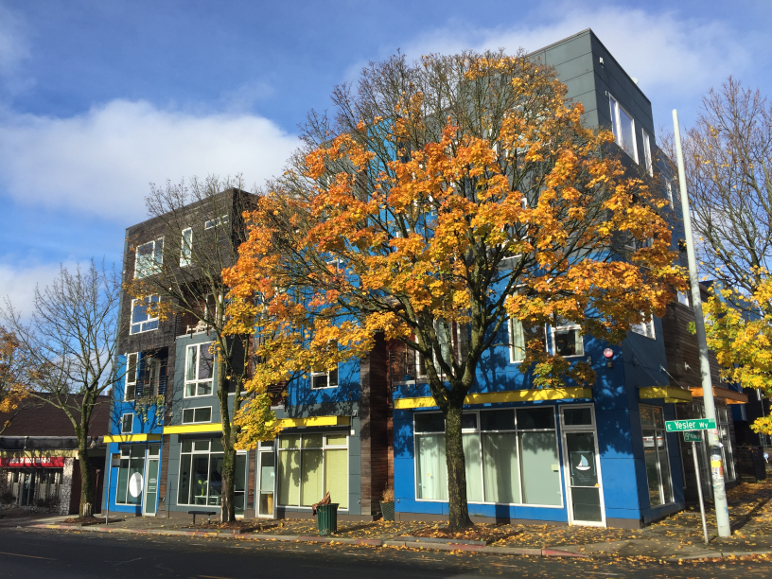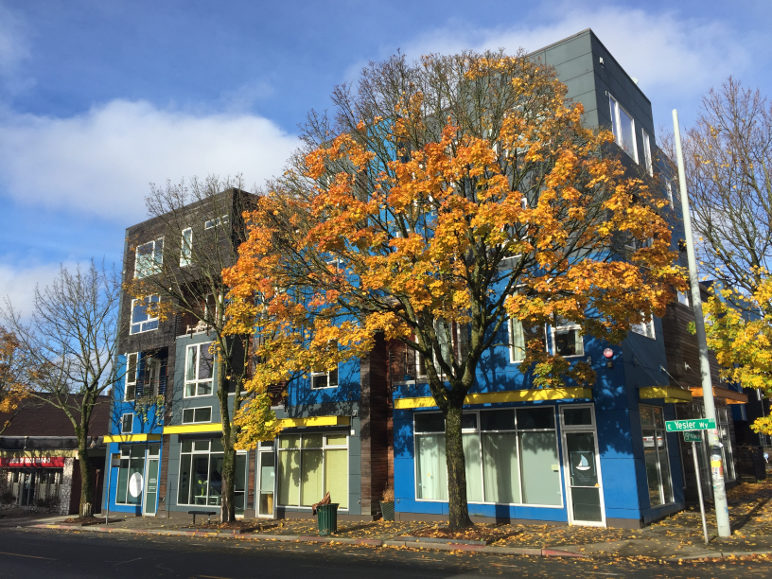Cascadia’s largest city, Seattle, just released its draft Environmental Impact Statement (EIS) on the proposed Mandatory Housing Affordability (MHA) program, a core part of the city’s Housing Affordability and Livability Agenda. (I’ve written about MHA here, here, here, here, here, here, and here.)
The question that looms largest for many is whether upzones proposed to allow larger buildings should be scaled back in areas with high risk of displacement, as suggested by advocates in some of Seattle’s neighborhoods historically populated by people of color. This gets at the heart of one of the most challenging aspects of the city’s quest for equity and affordability. Most everyone agrees that market-rate housing supply helps affordability at the regional and citywide scale. But do citywide trends play out at the scale of a neighborhood or city block, where conditions may be uniquely sensitive and the effects of policy changes can be unpredictable?
The EIS dissects two possible MHA scenarios. In the first alternative, MHA upzones are distributed consistently across the city. In the second, upzones are dialed back in areas the city has identified as having high displacement risk and “low opportunity” (mostly, the historical homes of communities of color) and correspondingly dialed up in areas identified as having low displacement risk and “high opportunity” (which are mostly affluent and white). That translates to fewer upzones in minority neighborhoods like Rainier Beach and more upzones in white neighborhoods like Ravenna.
To explore impacts on displacement, the EIS examined its relationship to homebuilding at the census tract level, using the change in the number of households with incomes below 50 percent of the area median as a proxy (EIS p.3.37). Between 2000 and 2011, more new housing correlates with less displacement, as shown in the graph below. That relationship also holds in high-displacement risk areas (EIS p.3.41).

Relationship between new homes built and the change in number of households with incomes below 50% area median from 2000 to 2011, by Seattle census tract. Source: City of Seattle.
These findings suggest that holding back the construction of new homes through reduced upzones would not help stem displacement but would in fact likely do the opposite. This result corroborates a similar study conducted in the San Francisco Bay area.
Surprisingly, the analysis also shows that from 2000 to 2011, displacement as measured by the EIS’s low-income household proxy was more common in neighborhoods facing low risk of displacement than in neighborhoods facing high displacement risk, as categorized by the city’s 2016 Growth and Equity analysis (EIS p.3.42). In other words, displacement appears to have happened more in affluent than in poorer neighborhoods.
The EIS also examined “physical” displacement caused when low-income residents are forced to leave when housing is slated to be demolished. (We documented how rare physical displacement is here.) Based on data from the city’s Tenant Relocation Assistance Ordinance (TRAO), the analysis projected very little difference in physical displacement among all of the EIS alternatives, including the status quo, as shown in the chart below (EIS p.3.58). Surprisingly again, TRAO data show that physical displacement caused by demolitions has been most common in “high opportunity” areas of the city, not in neighborhoods tagged by the city as facing the most risk of displacement (EIS p.3.31).

Projections of physical displacement of low-income households caused by demolitions, compared to projected affordable housing production. Source: City of Seattle.
But while the City’s displacement analysis clearly does not support a policy to reduce upzones in areas it has labeled high risk, the data don’t tell the whole story. The household income proxy is an unfortunate methodological limitation. The number of low-income households could have moved up or down due to a variety of causes unrelated to displacement, such as changes in jobs or earnings, a trend toward single-earner households, or moves having nothing to with rising rent. Displacement is notoriously difficult—some would say impossible—to track. Also, as noted in the EIS, the analysis could be improved by removing new housing units that are subsidized.
Furthermore, new housing can have localized effects on displacement not detected by study at the census tract level. For example, does a shiny new apartment building signal to wealthier home seekers that a neighborhood is newly desirable? When local businesses are disrupted by development, does it feed a chain reaction of cultural displacement? Such questions currently animate the debate around the implementation of MHA in Seattle’s Central Area and Chinatown/International District.
The unavoidable gray areas in displacement analysis raise questions. Should policymakers weigh empirical evidence, even if imperfect, against community members’ own opinions and preferences? Should local stakeholders get priority, especially in lower-income communities of color that have historically been excluded from city planning decisions?
Zoning may simply be the wrong tool for tackling displacement in high-risk communities. In neighborhoods such as the Central Area that are increasingly desirable because they are close to one of the hottest downtown job markets in North America, displacement will happen with or without upzones. What could make a difference, however, are upzones throughout the city—especially in the city’s northern expanse of wealthy, exclusive, single-family neighborhoods. Zoning changes in those places could be Seattle’s most effective strategy for taking displacement pressure off of communities of color elsewhere.
But to securely stabilize fragile communities so that they can benefit from the city’s rapid growth, targeted interventions that help establish economic and cultural anchors are the most promising solution. Currently, the city’s best example of what we need more of is the Equitable Development Initiative.
UPDATE (6/9/17): One factor absent in the draft EIS displacement analysis is the potential for MHA costs to render homebuilding projects financially infeasible. In such cases, the city’s own analysis discussed above suggests that the resultant loss of new housing would likely increase the displacement of low-income households. Proper assessment of this potential adverse impact of MHA would require a before-and-after feasibility analysis, which the city has not conducted.











Comments